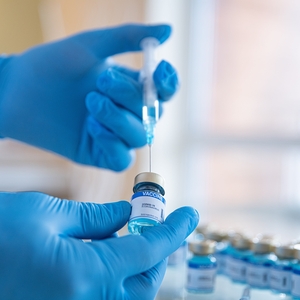Buckman Preemption & State Safe-Harbor Presumptions of Non-Liability for Approved Warnings
In an attempt to insulate drug and device manufacturers from the flood of tort liability in the latter half of the twentieth century, many states adopted “safe-harbor” statutes. These safe-harbor provisions created the presumption that a drug or device manufacturer was not liable for injuries in tort if the FDA approved the drug or device as “safe and effective” and the drug or device and labeling complied with the FDA’s approval. Yet, some states allowed plaintiffs to rebut that presumption if the manufacturer “withheld information from or misrepresented information” to the FDA.
In 2001, the United States Supreme Court ruled that state law “fraud-on-the-FDA” claims were preempted as the state law claims “inevitably conflicted with the [FDA’s] responsibility to police fraud consistently with the Administration’s judgment and objectives.” Buckman Co. v. Plaintiffs’ Legal Comm., 531 U.S. 341, 350 (2001).
At first, the Buckman decision seemed to indicate that such “withholding or misrepresentation” exceptions would also be preempted as the Sixth Circuit applied the Buckman analysis to reach that result. See Garcia v. Wyeth, 385 F.3d 961 (2004).However, a circuit split was soon created when the Second Circuit upheld such an exception as valid. Desiano v. Warner-Lambert & Co., 467 F.3d 85 (2006).
The Second Circuit distinguished Buckman on three grounds. First, the Second Circuit concluded that the cornerstone of the Buckman decision—an absence of the presumption against preemption because states did not have an historical interest in policing fraud against federal agencies—did not apply because states had a traditional interest in protecting the health and safety of its citizenry through common law tort actions. Second, plaintiffs’ claims for recovery were founded in the common law duty of care rather than a new “fraud-on-the-FDA” claim. Finally, proof of “fraud-on-the-FDA” was not an element of the claim but an affirmative defense. Finding preemption where no element of the claim was at issue would stretch preemption far beyond its historical application.
An evenly-divided U.S. Supreme Court, with the Chief Justice abstaining, failed to reverse the Second Circuit in Warner-Lambert v. Kent, 128 S. Ct. 1168 (2008). In 2012, the Fifth Circuit sided with the Sixth Circuit. See Lofton v. McNeil Consumer & Specialty Pharmaceuticals, 672 F.3d 372 (2012).
A recent district court opinion arising out of the Third Circuit continues that split as The Honorable Robert Kugler of the United States District Court for the District of New Jersey adopted the Second Circuit’s reasoning. As the Third Circuit has not had the opportunity to rule on this split, appellate review of Tigert v. Ranbaxy Pharmaceuticals, Inc., No. 12-00154 (Dec. 18, 2012) will hold important ramifications for what defenses are available to Defendants in three states where mass tort litigation is at home.
related services

All Claims Means ALL: The PREP Act Provides Immunity in COVID-19 Vaccination Case ...

Jackson County, Missouri Jury Rejects 3M Surgical Blanket Infection Claims ...
About Drug / Device Law Blog
Baker Sterchi's Drug / Device Law Blog examines topics and legal developments of interest to the drug and device industry. Learn more about the editor, Paul Penticuff, and our Drug and Device practice.
Subscribe via email
Subscribe to rss feeds
RSS FeedsABOUT baker sterchi blogs
Baker Sterchi Cowden & Rice LLC (Baker Sterchi) publishes this website as a service to our clients, colleagues and others, for informational purposes only. These materials are not intended to create an attorney-client relationship, and are not a substitute for sound legal advice. You should not base any action or lack of action on any information included in our website, without first seeking appropriate legal or other professional advice. If you contact us through our website or via email, no attorney-client relationship is created, and no confidential information should be transmitted. Communication with Baker Sterchi by e-mail or other transmissions over the Internet may not be secure, and you should not send confidential electronic messages that are not adequately encrypted.
The hiring of an attorney is an important decision, which should not be based solely on information appearing on our website. To the extent our website has provided links to other Internet resources, those links are not under our control, and we are not responsible for their content. We do our best to provide you current, accurate information; however, we cannot guarantee that this information is the most current, correct or complete. In addition, you should not take this information as a promise or indication of future results.
Disclaimer
The Drug / Device Law Blog is made available by Baker Sterchi Cowden & Rice LLC for educational purposes only as well as to give you general information and a general understanding of the law, not to provide specific legal advice. Your use of this blog site alone creates no attorney client relationship between you and the firm.
Confidential information
Do not include confidential information in comments or other feedback or messages related to the Drug / Device Law Blog, as these are neither confidential nor secure methods of communicating with attorneys. The Drug / Device Law Blog should not be used as a substitute for competent legal advice from a licensed professional attorney in your state.











